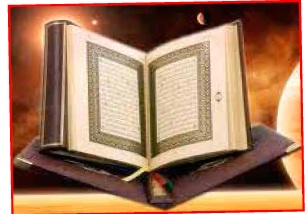Smithsonian to Host First Major Qur'an Exhibition

Washington, DC: The Holy Qur'an, revered by Muslims, is the centerpiece of a first-of-its-kind exhibition in the United States as the Smithsonian displays exquisitely decorated manuscripts from one of the top Qur'an collections.
The Smithsonian's Arthur M. Sackler Gallery announced Tuesday that "The Art of the Qur'an: Treasures from the Museum of Turkish and Islamic Arts" will bring 48 manuscripts and folios from the museum in Istanbul together with manuscripts from the collection of the Sackler and Freer Gallery of Art, which are together the Smithsonian's museum of Asian art.
The exhibition is set to open on October 15, just weeks before the presidential election, through February 20, 2017. Islam and the Qur'an may come up during debates and discussions, but Massumeh Farhad, chief curator at the Sackler and Freer and curator of Islamic art, says this exhibition is a chance to present a different story. She calls it an opportunity to "focus on the importance of this as a work of art and importance in art history.”
Why are these Qur'ans special?
The Arabic text of the Holy Qur'an was fixed as early as the late 7th century, Farhad said, but the variety in Qur'ans is "staggering." The exhibition will showcase different styles of calligraphy and illumination. Visitors will be able to compare different copies of the Qur'an and "see the sweep of history in front of us," said Sheila Blair, an art history professor who specializes in Islamic art at Boston College and Virginia Commonwealth University. "It shows how diverse the Muslim world is."
These copies were commissioned by elites and created by artisans, but they also had second or third lives noted in inscriptions that reflect the history they witnessed, said Simon Rettig, assistant curator of Islamic art. A copy of the Qur'an completed in 1307 for the tomb of Mongol leader Uljaytu in Soltaniyeh, Iran, was taken to Istanbul by Sultan Suleiman the Magnificent in 1531 and went to his relatives. "This book has had more incredible moments than I've had in my life," Rettig said.
How old are they?
These copies of the Qur’an span nearly a millennium, dating from the late 7th or early 8th centuries (not long after the time of Prophet Muhammad, PBUH) to the 17th century.
Where are they from?
These copies of the Holy Qur’an originally come from the Near East, Egypt, Syria, Afghanistan, Iran, Turkey and Iraq. In the waning days of the Ottoman Empire, the government transferred valuable artworks across the empire to Istanbul and they're now kept at the Museum of Turkish and Islamic Arts.

